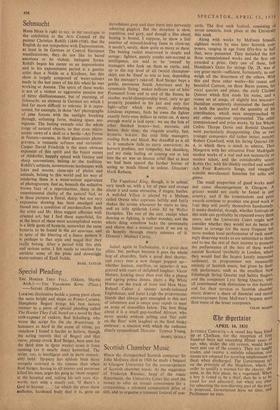Sehnsucht
HANS Huss is right to say, in the catalogue to the exhibition at the Arts Council of the painter Christian Rohlfs (1849-1938). that the English dp not sympathise with Expressionism, at least in its German or Central European manifestations; they do not like its bared emotions or its violent, inelegant forms. Rohlfs began his career as an impressionist and in his expressionist period is a gentler artist than a Nolde or a Kirchner, but this show is largely composed of water-colours made in the last years of his life when he was working at Ascona. The spirit of these works is not of a violent or aggressive passion nor of bitter disillusionment, but of yearning, of Sehnsucht, an element in German art which I find far more difficult to tolerate. It is repre- sented, for example, in those 'Art' photographs of pine forests with the sunlight breaking through, softening form, making space am- biguous. The feeling extends over the whole range of natural objects, so that even micro- scopic views of a shell or a beetle—Art Forms in Nature—assume, in their glamorous photo- gravure, a romantic softness and surrender. Caspar David Friedrich is the most obvious exponent of this spirit and the forest scenes of Altdorfer, happily spiced with fantasy and sharp conventions, belong to the tradition. Rohlfs's subjects, mountainous landscapes with lakes and moons, close-ups of plants and animals, belong to this world and his way of rendering them is a water-colour equivalent of photogravure. Just as, beneath the seductive brown fuzz of a reproduction, there is the unsentimental clarity of the natural fact, so in these pictures a literal, sharp, but not very expressive drawing has been smudged and fussed into a condition of marshmallow. Both the artist and Mr. Hess suggest affinities with oriental art, but I find these superficial, for at the heart of these most accomplished works is a little germ of hysteria, somewhat the same hysteria to be found in the art nouveau, and in spite of the blurring of a linear pattern it is perhaps to that style and mood that they really belong. After a period with this able and serious artist, 1 felt ready to swallow for antidote some of the plain and downright water-colours of Emil Nolde.
BASIL TAYLOR










































 Previous page
Previous page